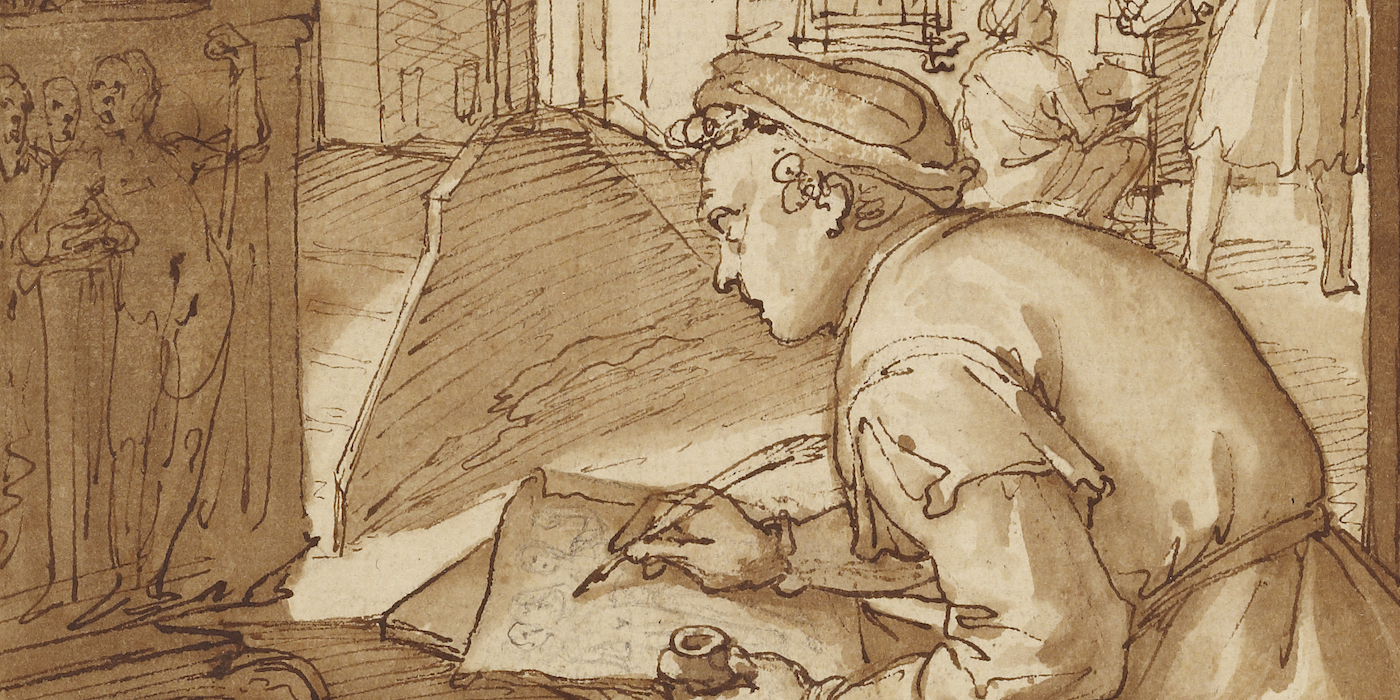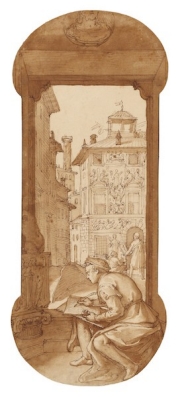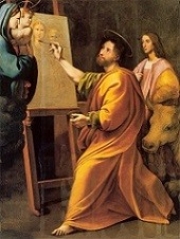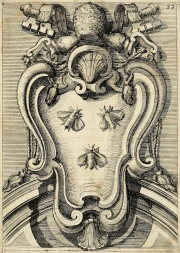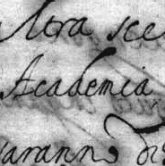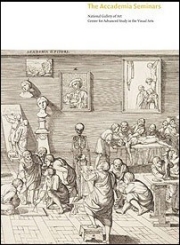To search archival documents and transcriptions, visitors may select a single search term, combine guided searches in up to six categories, or launch a free-text search across the site from the search page. Indexed names include those of artists and artisans as well as persons constituting a wide swath of the population of Rome who transacted business with members of the Accademia (numbering around 1,450 individuals). The Accademia site includes pages for all of those mentioned in the documents, including references and links to the documents in which their names appear. These pages also indicate the role or roles these individuals played in Roman society and/or within the Accademia, if that information is retrievable. For well-known artists or for artists who contributed significantly to the life of the Accademia, the site incorporates artist pages that include not only links to the documents in which they are named but also selected bibliographies, related images, and in some cases portraits.
The site also includes pages for over 50 places recorded in the documents. Brief interpretive essays focus on five of the most important sites pertaining to the Accademia’s institutional history and business, such as the Church of Santi Luca e Martina, home to the Accademia di San Luca beginning in 1588. These are localized, where possible, within historic maps that represent views of Rome using varying modes of cartographic convention, from the woodcut published in the Nuremberg Chronicle (1493) to the ichnographic plan of Giovanni Battista Falda (1676) and followers.
Bibliographies link either to the catalog of the National Gallery of Art Library (Mercury) or to WorldCat. Many of the works of art represented in the carousels are from the collection of the National Gallery of Art, along with other museums that house the Samuel H. Kress Collection. The carousels additionally provide hundreds of open-access works of art by academicians from museums across the world. More are planned for periodic future updates. back to top
The project team of The History of the Accademia di San Luca, c. 1590–1635: Documents from the Archivio di Stato di Roma thanks, in addition to the previous members of the team, colleagues at the Accademia Nazionale di San Luca, including Francesco Cellini, presidente, Claudio Strinati, segretario generale, and Carolina Brook, vice segretario generale, as well as at the Archivio di Stato di Roma, Michele di Sivo, director. Special thanks also to Catherine Sutherland, deputy librarian, Pepys Library, Magdalene College, Cambridge; Vincent Buonanno; and Paul and Frederika Jacobs for their generosity. The project team also thanks Sarah McPhee, Patrizia Cavazzini, and Laurie Nussdorfer, who serve on our advisory board, and Antonia Fiori, associate professor of the history of medieval and early modern law, Università La Sapienza di Roma, who were especially helpful with updates to the site. The team is equally grateful to colleagues at the Center for Advanced Study in the Visual Arts: Steven Nelson, dean; Elizabeth Cropper, dean emerita; Therese O’Malley, associate dean; and Valeria Federici, research associate. The team is also grateful to the Gallery’s web designers, developers, and systems architects.
Current Team Members
Notes
[1] Peter M. Lukehart, "The Journey of The History of the Accademia di San Luca, c. 1590–1635: Documents from the Archivio di Stato di Roma into and out of XML," Proceedings of the Balisage Markup Conference, vol. 21 (2018): https://www.balisage.net/Proceedings/vol21/html/Lukehart01/BalisageVol21-Lukehart01.html
[2] For a more thorough introduction to the study of academies of art in general and of the Accademia di San Luca in particular, see Peter M. Lukehart, “Introduction,” in The Accademia Seminars: The Accademia di San Luca in Rome, c. 1590–1635, ed. Peter M. Lukehart, CASVA Seminar Papers 2 (National Gallery of Art, Washington, 2009), 1–21. Among the innovations that the Accademia introduced was a program of education for young artists, including biweekly instruction in drawing followed by academies (lectures) on topics ranging from perspective to grace and decorum. This new emphasis on the intertwined importance of theory and practice has remained a constant for all subsequent institutional pedagogy of the arts, from the French Académie Royale de Peinture et de Sculpture (1648) to the university-based system that exists in the present-day United States. Reading the mission statements of current art schools and university fine arts departments, we find these two fundamental principles at play; the variations between programs arises from the emphasis placed on one or the other skill.
[3] "The School of Art is founded on the belief that art is a fundamental force in national and international culture, and that one of the primary standards by which societies are judged is the quality, creative freedom, critical insight, and formal and technical innovation of the visual art they produce." https://www.art.yale.edu/about/mission-statement
[4] From the Art Institute of Chicago corporate charter: "To provide excellence in the delivery of a global education in visual, design, media, and related arts, with attendant studies in the history and theory of those disciplines set within a broad-based, humanistic curriculum in the liberal arts and sciences. To provide instruction for this education in a range of formats: written, spoken, media, and exhibition-based." "Objective: To assemble a diverse body of intelligent and creative students and faculty in an environment designed to facilitate and encourage the discovery and production of significant ideas and images and to provide for the development of individual excellence in undergraduate and graduate programs in the visual and related arts." https://www.saic.edu/about/mission-and-governance
[5] Romano Alberti, Origine et progresso dell’Academia del Dissegno, de pittori, scultori, et architetti di Roma (Pavia, 1604); Melchiorre Missirini, Memorie per servire alla storia della Romana Accademia di S. Luca fino alla morte di Antonio Canova (Rome, 1823).
[6] The brief of 1577 and the bull of 1588 are transcribed from Missirini’s Italian translations (1823, 20‒21; 23‒26) in Lukehart 2009, app. 1, 348–349; app. 2, 350–352. Romano Alberti, Trattato della nobiltà della pittura composto ad istantia della venerabil’ Compagnia di San Luca et nobil’ Academia delli pittori di Roma (Rome, 1585). For Alberti’s early history of the Accademia, see note 5.
[7] For a fuller treatment of the issues discussed in this summary, see Peter M. Lukehart, “The Accademia di San Luca between Educational and Religious Reform,” in The Italian Academies, 1525–1700: Networks of Culture, Innovation, and Dissent, ed. Jane E. Everson, Denis V. Reidy, and Lisa Sampson (Oxford, 2016), 170–185.
[8] Alberti 1604, 6–13; “Statuti originali in tempo di Paulo 5.o," Archivio Storico dell’Accademia di San Luca; published as Ordini dell’Accademia de Pittori et Scultori di Roma (Rome: Carlo Vullietti, 1609).
[9] Alberti 1604, 25–78 (curriculum and accademie [lectures]).
[10] Alberti 1604, 78–80.
[11] Peter M. Lukehart, “Visions and Divisions in the Accademia di San Luca, 1593-1595,” in The Accademia Seminars: The Accademia di San Luca in Rome, c. 1590-1635, ed. Peter M. Lukehart (Washington: National Gallery of Art, 2009): 160-185, esp. 185.
[12] Stefania Ventra, Restauri di dipinti nel Novecento: Le posizioni nell’Accademia di San Luca, 1931–1958 (Università di Roma, La Sapienza, Studi Umanistici-Arti, 2014), esp. 88–108.
[13] Elisa Camboni, “Antiveduto Grammatica: un principe-imprenditore; L’Accademia di San Luca nei primi anni del Seicento,” Annali delle arti e degli archivi: Pittura, scultura, architettura 3 (2017): 211–216 provides an insightful reading of the events; see also Peter M. Lukehart, “The Roman Connection: The Accademia di San Luca as an Exemplum for the Académie royale de peinture et de sculpture,” in Accademie artistiche tra eredità e dibattiti contemporanei, ed. Jérome Delaplanche, Sarah Linford, and Francesco Moschini, Conference Proceedings of the Académie de France à Rome—Accademia di Belle Arti—Accademia di San Luca (Rome, forthcoming). For a different interpretation, see R. Ward Bissell, “Raphael and the Accademia di San Luca in Rome,” Artibus et Historiae 32, no. 63 (2011): 55–72.
[14] Peter Lukehart is completing a study of the major educational reforms undertaken by the Accademia from the late sixteenth through the late seventeenth century, in “(Ri)Scrivere ‘l’Origine e progresso’ dell’Accademia di San Luca,” in Storie e controstorie delle Accademie del Disegno fra Firenze, Bologna, Roma, ed. Vita Segreto (Rome, forthcoming).
[15] Karl Noehles, La chiesa di Santi Luca e Martina nell’opera di Pietro da Cortona (Rome, 1970), 99; Joseph Connors, review of Pietro da Cortona e il disegno, Journal of the Society of Architectural Historians, 57, no. 3 (1998): 318–321, esp. 320. See also Silvia Tita's essay on the Church of Santi Luca e Martina.
